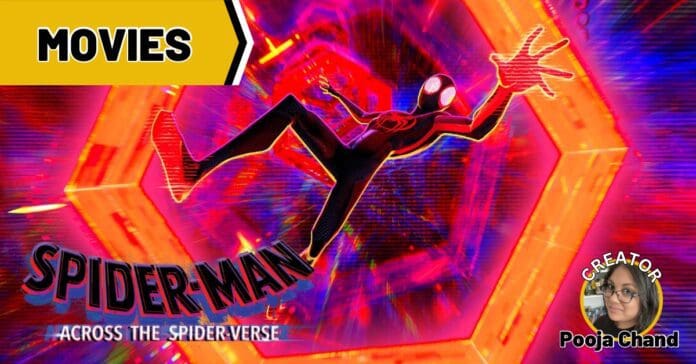Share this
What was presumed to be a blockbuster hit for the summer is finally here, and fans ranting and raving about it. Across the Spider-Verse is the sequel to the critically acclaimed film, Into the Spider-Verse, and continues the journey of Miles Morales after a year of being Spider-Man. However, balancing his double life is met with many challenges when Miles is reunited with Gwen and introduced to a society of Spider-People, all of whom seem to be hiding something from him.
Note: This review does NOT contain spoilers.
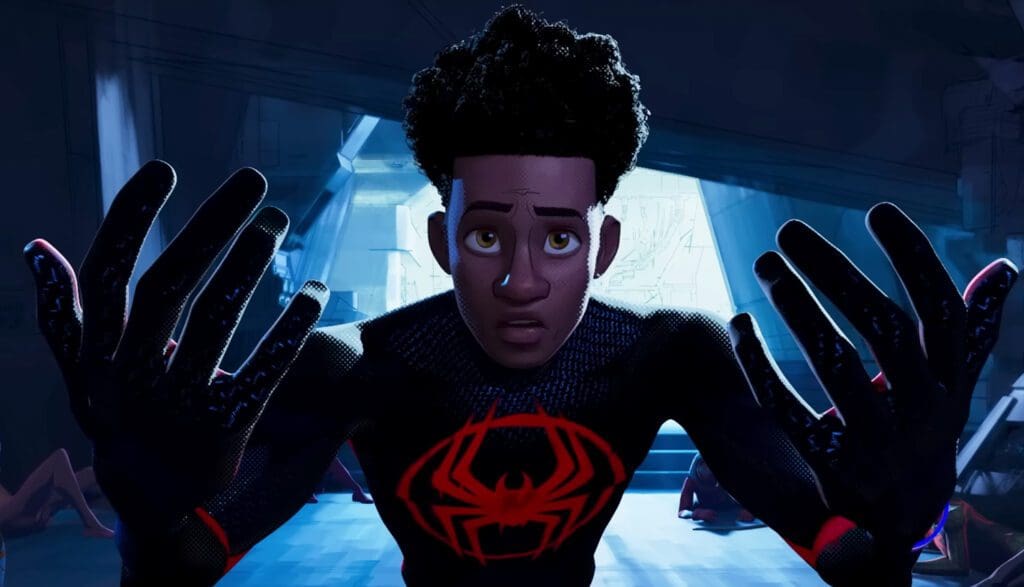
Right off the bat, the film is a prime example of the perfect sequel. Rather than rehashing what made Into the Spider-Verse so successful, it instead pulls storylines from the original film, and provides a relative and useful background. All of this eventually leads into the overall plot and the themes that are heavily discussed throughout the film. It’s not uncommon for franchises to bring up flashbacks or moments from previous films in newer films. But it can end up in disaster if it serves no real purpose for the overall plot or feels like the audience is just rewatching a previous film.
Across the Spider-Verse avoids this mishap by providing an intricate web of story that allows you to go back and forth between the first film and the sequel, and find meaningful connections. For example, there is a deeper dive into Gwen’s character and what her story has been thus far. This serves as an explanation for the mysterious decisions she makes, between both films.
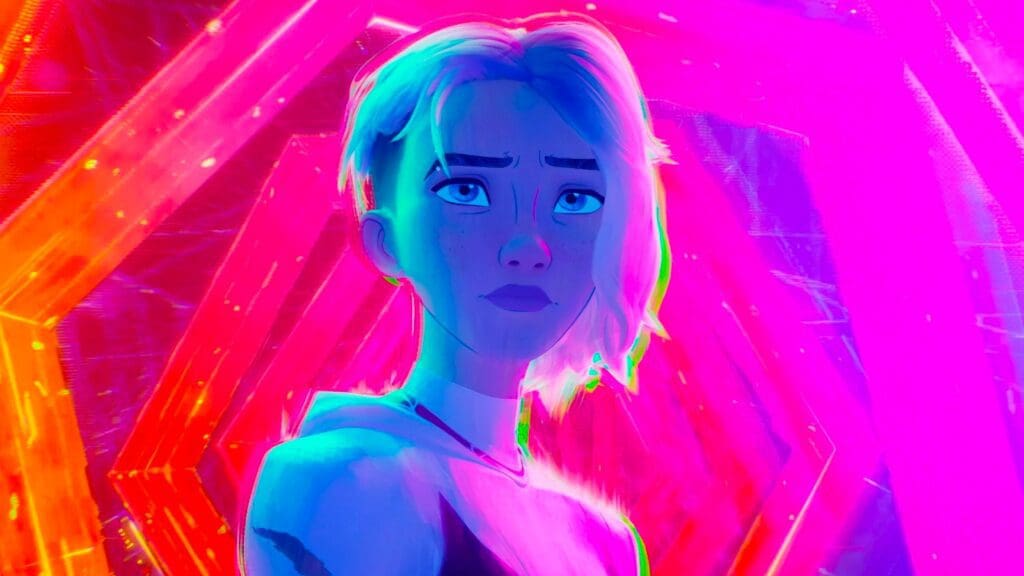

But despite these connections, Across the Spider-Verse still manages to be its own film with its own story, character goals, and unique twists and turns. The tone of the story has changed entirely to where it’s darker and scarier, but also deeply heartfelt with heavier themes and emotions. There is a bigger conversation surrounding identity, choice, the connection we have with our parents that hits home for many people, and ultimately, a sense of belonging.
Characters like Miles and Gwen often struggle to make sense of their identity and the act of making a choice, something that kids and adults alike can relate to throughout their life. Whether it’s about your racial and ethnic identities, or being what others want you to be versus writing your own story, Miles and Gwen expand on these topics and relay it to us in terms of being a hero. It is very human for us to need to belong somewhere as well, and to feel welcome in a safe space. It’s Miles’ story that dives deep into this exact topic as he explores what could be a safe space for him, whether or not he belongs and whether or not he will be accepted.
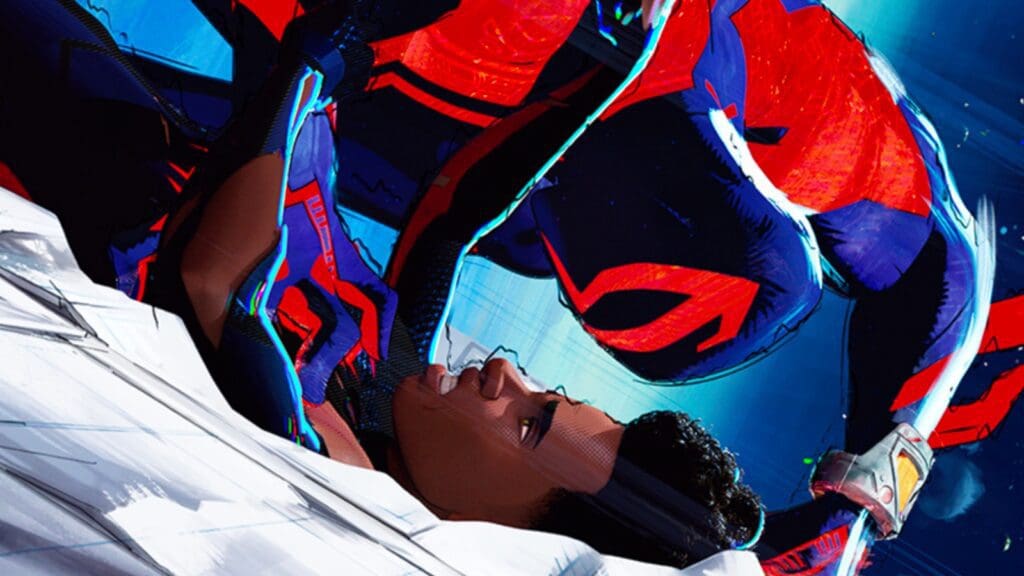

Moving away from themes and story, the film also introduces some fantastic characters while developing existing characters. We get to experience the growth and change with Miles and Gwen, while seeing their relationships with their parents. But we also are introduced to characters like the terrifying Miguel O’Hara, Jessica Drew as the mother who kicks serious butt, the optimistic Pavitr Prabhakar of Mumbattan, Spider-Byte the tech expert, and Hobie Brown, our favorite anti-establishment punk.
While some characters have more screen time than others, their individual introductions are perfect enough to establish who they are and what their role is in Miles’ overall journey. The film also introduces a comedic bad guy, The Spot, which appears unassuming and harmless at first. But it becomes very clear that The Spot will continue to have a massive role going forward as the circumstances quickly escalate. It’s safe to say that audiences will be excited to see more of these new characters shine some more in the next film.
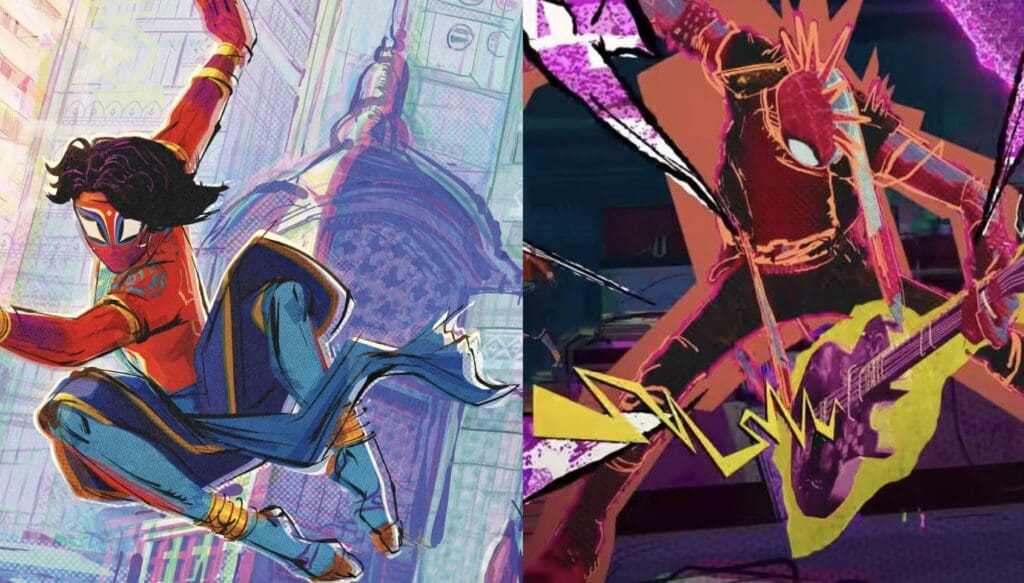

The animation of the film can be jarring and startling, but it is never without purpose. We are constantly seeing unique styles of art across various universes, each representing the style and aesthetic of the individual character that universe belongs to. Gwen’s world comes across more fluid and blended, with watercolor splashes everywhere. Meanwhile Mumbattan is reminiscent of art styles from India, creating the perfect setting for Pavitr’s world. And naturally, the default world of Miles Morales continues the typical comic book art style that most are familiar with. Shot by shot, frame by frame, the animation continues to take risks at every moment, utilizing heavy visuals to aid in the storytelling process.
A huge highlight of the film is its soundtrack which is produced entirely by Metro Boomin and features artists like A$AP Rocky, Future, Offset, Swae Lee, and so many more. While the music for Into the Spider-Verse was indicative of the natural juvenile essence that Miles carries with him, the music for Across the Spider-Verse takes on a vastly different approach. Instead, it taps into the deeper themes reflected throughout the film. There’s a mixture of varying sounds between each track which represent both sides of Miles, whether it’s in regards to his biracial identity or his conflicting identities of being just a normal kid and being Spider-Man.
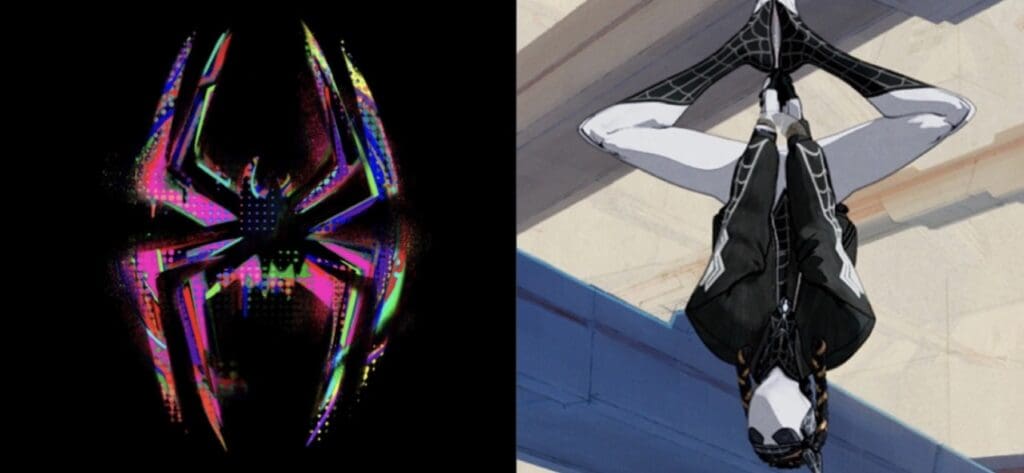

If you have not yet listened to the soundtrack itself, it does provide audios from the film itself as a way to transition between one track to the next. And while this transition is not always my favorite, it is done especially well for this film as it serves purpose in giving personality to not just Miles, but other characters as well. It’s a common thing for music to give us goosebumps. But it is a rare occurrence to listen to a film’s music, and feel like we are being taken out on a nightly drive to clear our head except the drive is us just thwip-thwipping across a city skyline.
While I can’t speak for all Spider-Man fans, it is difficult to watch this film and not be in awe of the way a community of Spider People are represented in Across the Spider-Verse, while simultaneously giving us a story that cycles through so many difficult themes. Not only does the film introduce key characters that are diverse and relatable, but it also slips in very loud themes about family, parent and child relationships, and belonging and acceptance. It’s also easy to forget that this is only the first half of an even bigger story, so much so that it’s startling to see the film end with the cliffhanger it had. But it’s enough to get us hungry for more and geared up for what will hopefully be a promising and satisfying finale to Miles’ story.
Samosa Rating:
Spider-Man: Across the Spider-Verse receives 5 out of 5 Samosas.
Spider-Man: Across the Spider-Verse is now playing in theaters.
Runtime: 2h 16m
For additional thoughts on Across the Spider-Verse, be sure to follow me at @samosasandpopcorn on TikTok for spoiler-filled videos.
And for another perspective containing spoilers, check out JT Forrester’s review of the film here.

